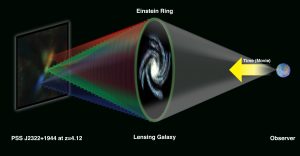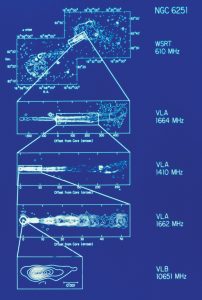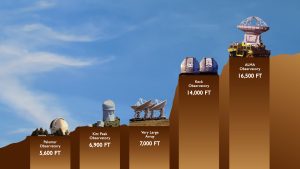The Very Large Array (VLA) looked at a galaxy more than 12 billion light-years from Earth. Between this galaxy and Earth lies another distant galaxy, so perfectly aligned along the line of sight that its gravity bends the light and radio waves from the farther object into a circle, or “Einstein Ring.” Gravitational lenses were predicted, based on Albert Einstein’s General Theory of Relativity, in 1919. Einstein himself showed in 1936 that a perfectly-aligned gravitational lens would produce a circular image, but felt that the chances of actually observing such an object were nearly zero. The first gravitational lens was discovered in 1979, and the first Einstein Ring was discovered by researchers using the VLA in 1987.


Zooming into a Black Hole
This collection of data from a powerful radio galaxy known as NGC 6251 shows the increase in detail astronomers get when they use the Very Large Array and the Very Long Baseline Array. The VLA sees the blobbiness along the jet of material shooting out of a supermassive black hole. The VLBA can see down into the area right around that black hole.

Telescope Comparison
Sited at 16,500 ft above sea level, ALMA is the highest array of telescopes in the world. This diagram compares the major observatory elevations.





